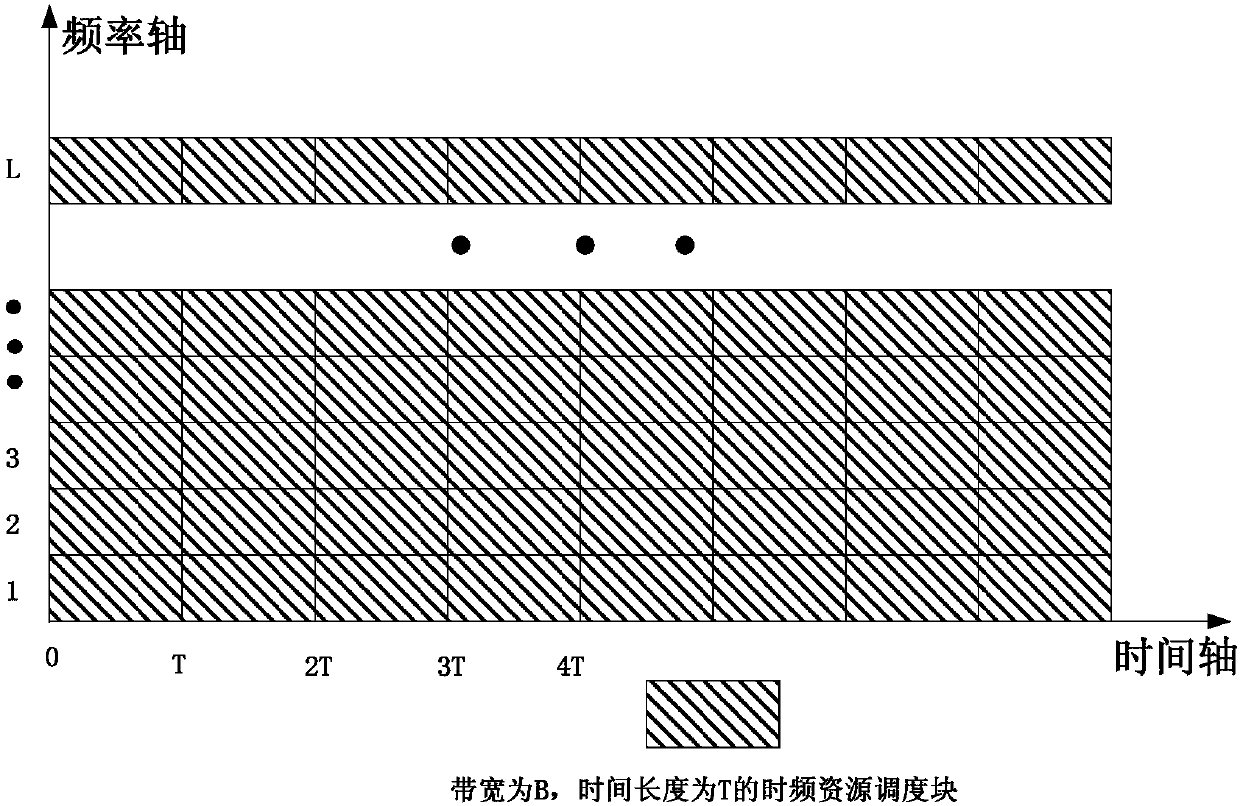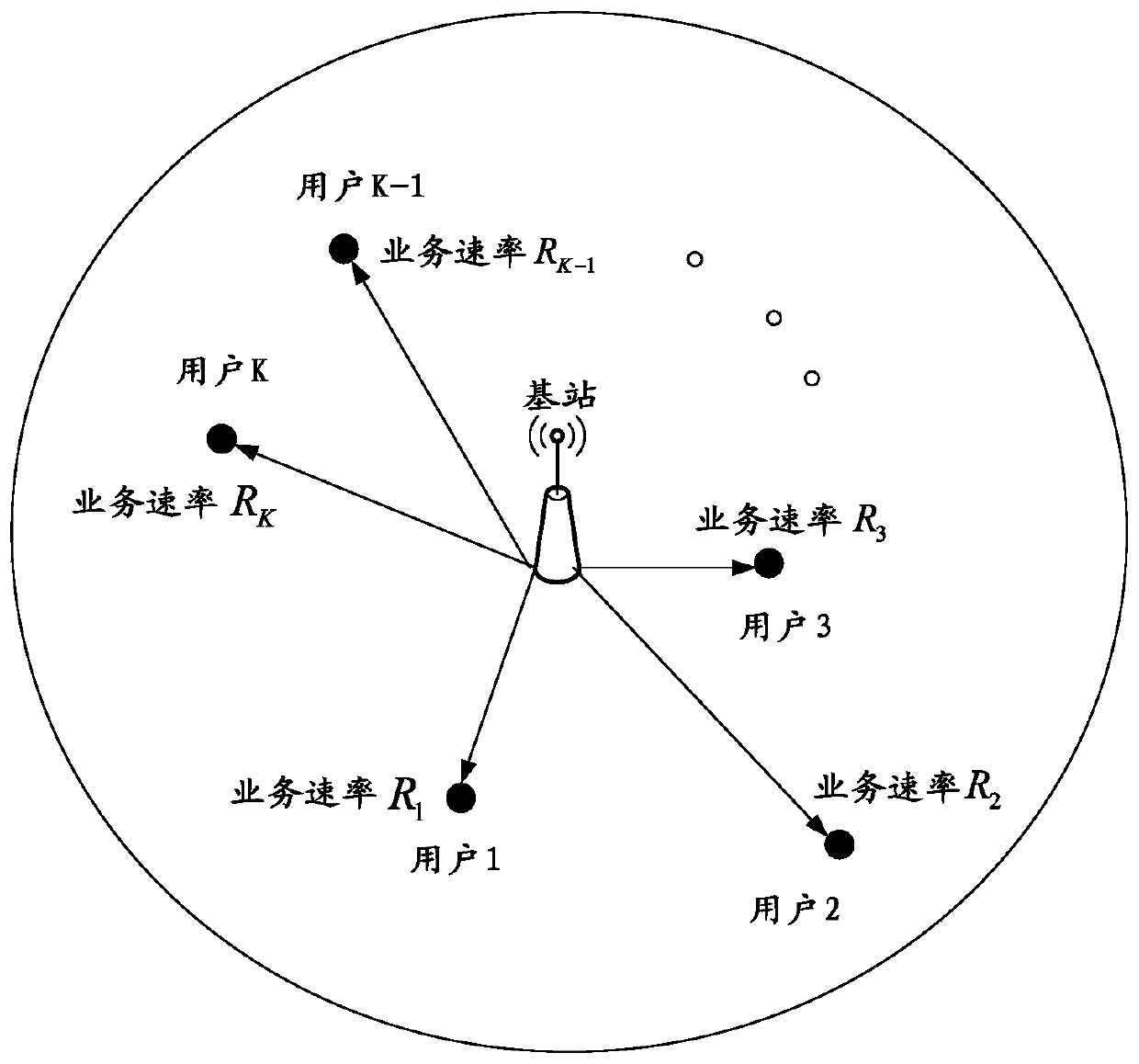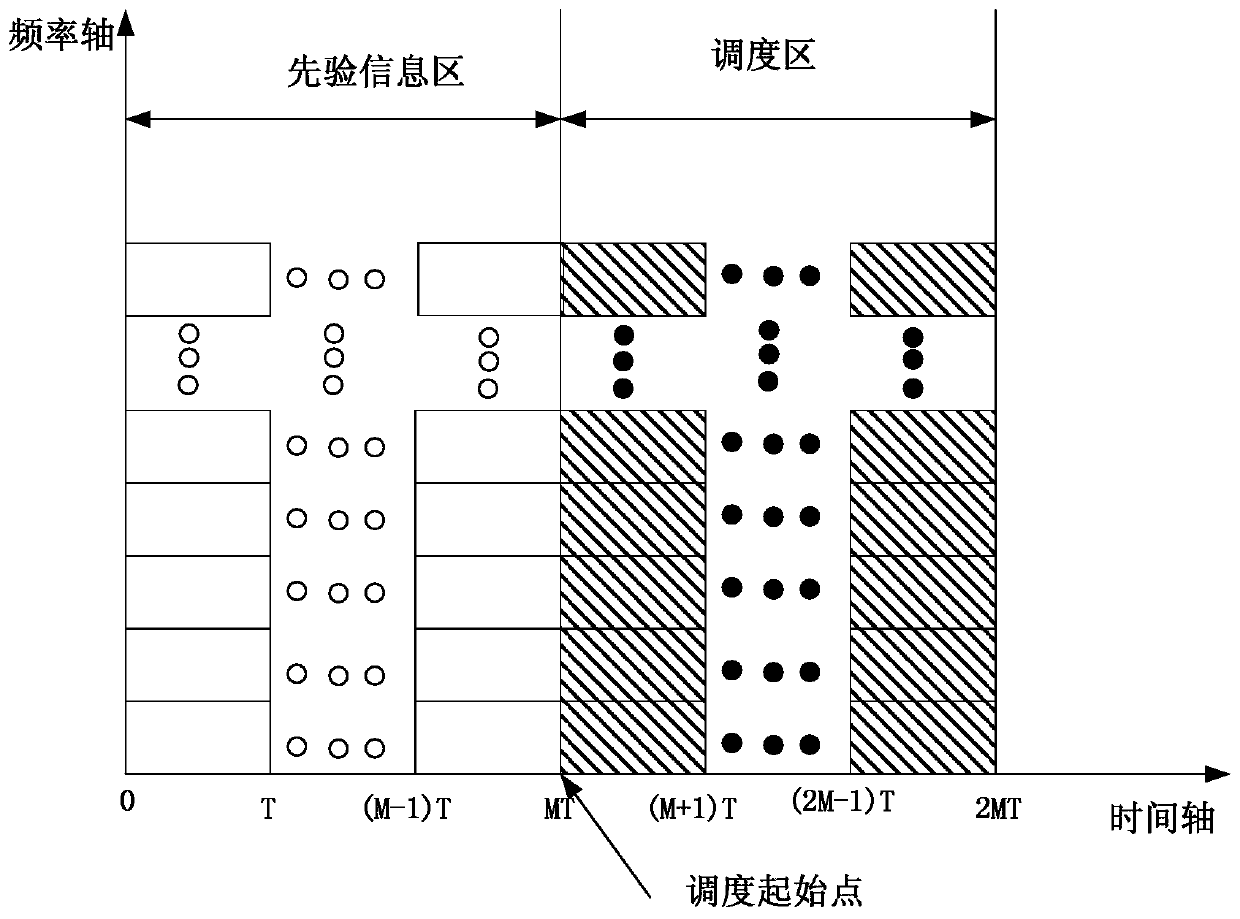On-demand downlink channel allocation method for ofdm base station system
A base station system, on-demand allocation technology, applied in multi-frequency code systems, wireless communications, electrical components, etc., can solve the problems of unable to achieve optimal performance, less prior information, unable to achieve orderly allocation of resources, etc. Reasonable allocation on demand, good downlink throughput, and maximized utilization
- Summary
- Abstract
- Description
- Claims
- Application Information
AI Technical Summary
Problems solved by technology
Method used
Image
Examples
Embodiment 1
[0058] The method for allocating downlink channels on demand in this embodiment specifically includes the following steps:
[0059] 1) Let the signal transmission power of the base station be P max , each sub-channel is composed of a group of continuous sub-carriers with the same number, the number of sub-channels is L, the bandwidth of each sub-channel is B Hz, and its label is 1~L, and it is stipulated that a sub-channel can only be assigned to It is used by one user, and the transmit power is evenly distributed on all subcarriers. The base station system can obtain the channel state information (CSI) of the user on each sub-channel in real time, and the number is N=2 k ), and adopt adaptive modulation and coding technology on each basic time-frequency resource scheduling block whose time is T, such as figure 1 As shown, according to the channel state information CSI on each sub-channel, different modulation and coding schemes (MCS, total N=2 k schemes, the spectrum utili...
PUM
 Login to View More
Login to View More Abstract
Description
Claims
Application Information
 Login to View More
Login to View More - R&D
- Intellectual Property
- Life Sciences
- Materials
- Tech Scout
- Unparalleled Data Quality
- Higher Quality Content
- 60% Fewer Hallucinations
Browse by: Latest US Patents, China's latest patents, Technical Efficacy Thesaurus, Application Domain, Technology Topic, Popular Technical Reports.
© 2025 PatSnap. All rights reserved.Legal|Privacy policy|Modern Slavery Act Transparency Statement|Sitemap|About US| Contact US: help@patsnap.com



